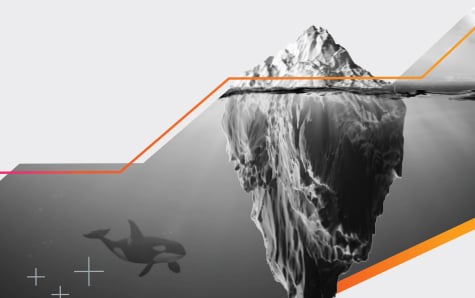Organizational Change Management (OCM): A Complete Guide

Change is hard. Instigating change across an organization can feel nearly impossible. Just ask any executive about a time when they tried implementing new rules or introducing new software across the company, and you’ll hear plenty of horror stories.
While many of us know the pitfalls associated with making changes that impact multiple stakeholders, there are ways to do it successfully. Thankfully, some experts have made it their life’s work to discover successful methods for introducing change across an organization. These leaders’ innovative change management models provide others with valuable frameworks to facilitate transformative initiatives within their own companies.
Read on to learn more about change management models, and four top models used in business today.
What are change management models?
Change management models are valuable frameworks that guide leaders through preparing, equipping, and supporting employees to adopt changes that drive successful organizational success and outcomes. These models provide structured approaches that transition from the current state to a new one, helping to:
- Reduce resistance
- Improve communication
- Strengthen employee commitment to change
These different models emphasize different aspects of change, but most of them include some elements of planning, implementation, communication, participation, and follow-up.
A related discipline, IT change management focuses on how organizations make changes as they related to IT service delivery and management.
Lewin’s Change Management Model
Kurt Lewin, a physicist, and social scientist, proposed one of the oldest change management models in the 1950s. Lewin’s change management model, also called the Unfreeze-Change-Refreeze model, is one of the simplest and most widely used approaches to change management. It consists of three stages:
Unfreeze
This stage is when the need for change becomes apparent, the current status quo is challenged, and a new direction is determined. It’s a crucial stage because people often resist change. The main goal of this stage is overcoming this natural resistance and developing an understanding of why change is necessary.
Communication, education, and participation in the decision-making process are critical during this stage.
Change
This is the transitional stage where changes are implemented. Once everyone accepts the necessity of change, your organization can move to this stage. It often involves learning new behaviors, processes, and ways of thinking.
It can be complex and uncertain as everyone adapts to the new direction. Support, guidance, and communication from leadership are critical to address concerns and provide reassurance.
Refreeze
This last stage is about solidifying the new behaviors and processes in place as they become the new norm. In this stage, change is accepted and becomes the new operational standard. Providing ongoing support and training is essential to ensure the new behavior becomes embedded in your organization’s culture. Celebrating successful implementation can also help reinforce the new status quo.
Lewin’s change management model is popular because of its simplicity and focus on understanding and reducing resistance to change. Despite its simplicity, it captures the essence of change, recognizing that people are at the heart of it.
ADKAR Model for Change
The ADKAR model is a goal-oriented model that encourages leadership to focus on activities that create specific business results. Developed by the leading change management research and advisory firm Prosci after studying change patterns in over 700 organizations, ADKAR stands for Awareness, Desire, Knowledge, Ability, and Reinforcement — the critical components of change.
Awareness. This step is about creating organizational awareness about why changes are necessary. It might mean communicating about market pressures, customer needs, company strategy, or crucial factors driving change. With effective communication, people will understand the context and rationale for the change.
Desire. The next step is developing a desire to support and participate in the change across your organization. This might be driven by intrinsic motivation, like learning new skills or being part of a successful project, or extrinsic motivation, like incentives or peer pressure.
Knowledge. This is where leaders provide the knowledge necessary to facilitate change. This might mean training on new system skills, or behaviors, information about new processes, or coaching from leaders to peers.
Ability. Knowledge is not enough on its own — people need to be able to implement changes daily. This might mean additional training, practice, or even changes to the organizational structure or tools supporting a new operating method.
Reinforcement. The last step is about making changes stick. It might involve rewards or recognition for those who embraced the change, mechanisms to gather and act on feedback, or even just reminders about why the change was necessary and how it benefits the company.
With the core idea that addressing the specific needs and experiences of the people who are expected to endure change increases the chance of success, ADKAR is a straightforward, easy-to-understand model that you can apply across different change initiatives.
The McKinsey 7-S Model
Developed in the late 1970s by two consultants at McKinsey & Company, the McKinsey 7-S model evaluates and makes changes based on your organization’s internal alignment. Each “S” in the framework represents seven interrelated aspects of an organization that must be balanced for success. They are divided into “hard” and “soft” elements.
The hard elements are:
- Strategy. This refers to your organization's plan or course of action to use resources efficiently and gain a competitive advantage. It needs to align with your organization’s mission, vision, and goals.
- Structure. The structure of your organization, including its hierarchy, division of tasks, and reporting lines, plays a crucial role in supporting your overall strategy.
- Systems. These are the processes that employees use daily to get work done, which can include formal processes, like a performance review, and informal processes, like communication norms.
The soft elements are:
- Shared Values. Sometimes called superordinate goals, these are the core values embedded in your organizational culture that drive behavior. They are often found at the center of the model to reflect their importance as the heart of your organization’s culture.
- Skills. Your employees’ skills and abilities should align with the overall organizational strategy.
- Style. The managers' leadership style and overall management style within your organization impact how decisions are made, how work is done, and how your employees are motivated.
- Staff. This factor considers your organization's workforce's abilities, diversity, and capacity. It also includes how your company recruits, develops and retains staff.
This model argues that all seven elements must be considered and aligned for effective change to occur. Change in one aspect will require changes in the rest for your organization to continue functioning effectively. It makes it a comprehensive tool for understanding the complexities of organizations and the changes they may need to undergo.
Nudge Theory
Sometimes, changes don’t require direct instruction or enforcement. In fact, sometimes doing so might trigger more backlash and friction than actual change. In these cases, the nudge theory might be the most effective.
Developed by Nobel laureate Richard Thaler and Cass Sunstein, nudge theory is based on the idea that when you understand how people think, you can use positive reinforcement to influence their behavior. It proposes that positive reinforcement and indirect suggestions influence the behavior and decision-making of groups just as potently, if not more so, than direct instruction, legislation, or enforcement.
While this model isn’t only about changes in an organizational context, it can be used to understand better how people think and make decisions and how to help them make better decisions. Leveraging nudge theory allows you to avoid making strict change requirements and encourage your staff’s buy-in and support.
For example, if you want to implement new software that will impact your employee, consider how you can showcase how these changes will benefit them. Present the technology in a favorable way to encourage them to learn and adopt it instead of creating friction.
(For another change management process example, read about Kotter’s 8 Step process here)
How change management encourages organizational innovation
To be in business today means being open and willing to adapt to changes. However, implementing these changes across an organization can be challenging. Understanding and applying change management models and concepts like nudge theory can be incredibly advantageous as your company navigates through shifts in its operating environment.
These models provide a structured approach, reducing the friction that often comes with change and increasing the likelihood of achieving your desired outcome. They are especially beneficial in helping your organization adapt to technological advancements by aligning IT and business goals, mitigating resistance, managing risks, and ensuring continuity.
As change is inevitable, mastering these models will allow your company to stay agile and competitive in an ever-evolving landscape.
See an error or have a suggestion? Please let us know by emailing splunkblogs@cisco.com.
This posting does not necessarily represent Splunk's position, strategies or opinion.
Related Articles
About Splunk
The world’s leading organizations rely on Splunk, a Cisco company, to continuously strengthen digital resilience with our unified security and observability platform, powered by industry-leading AI.
Our customers trust Splunk’s award-winning security and observability solutions to secure and improve the reliability of their complex digital environments, at any scale.




